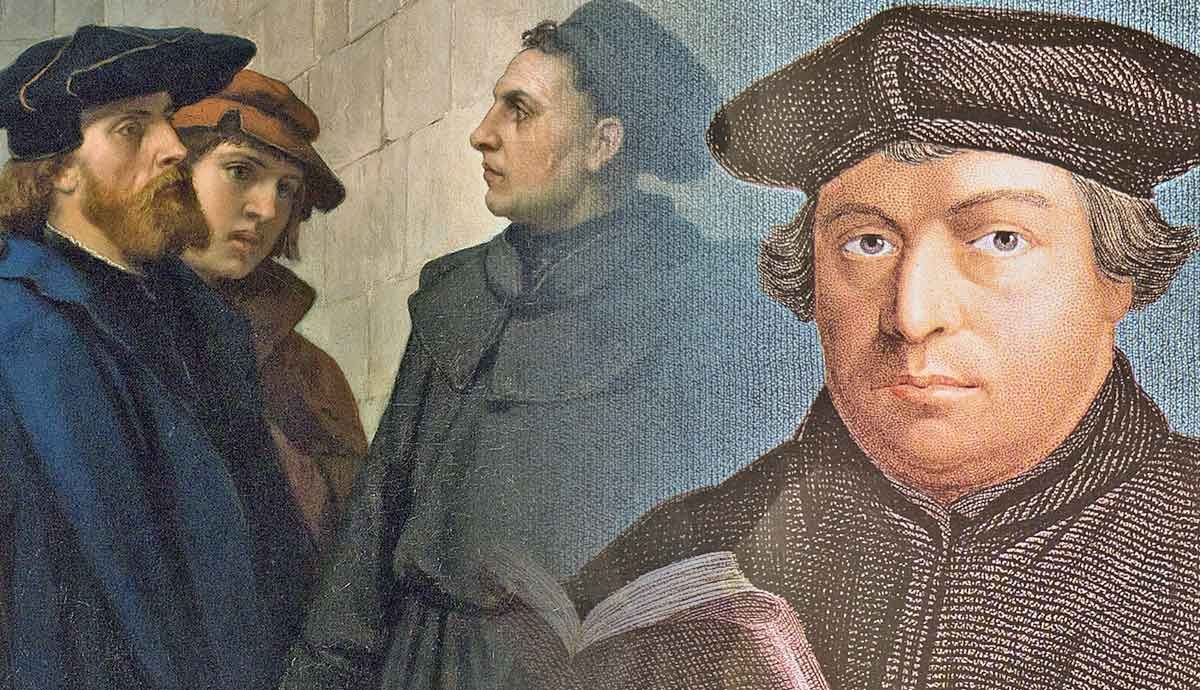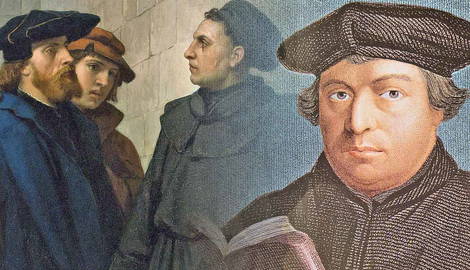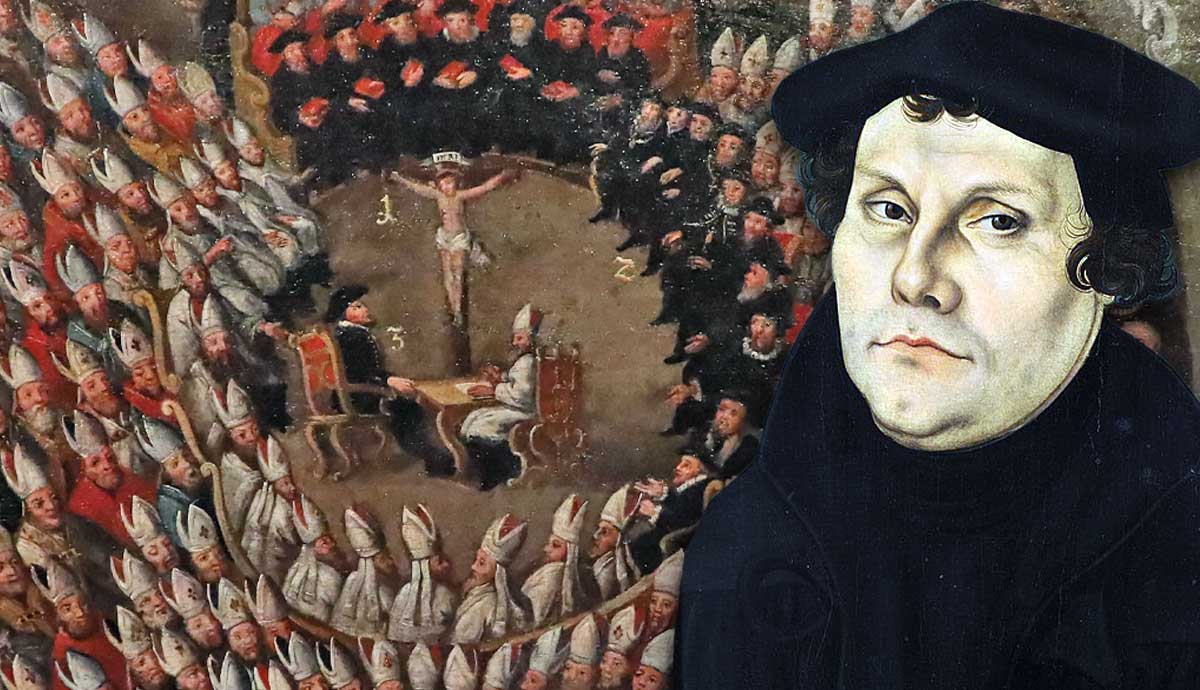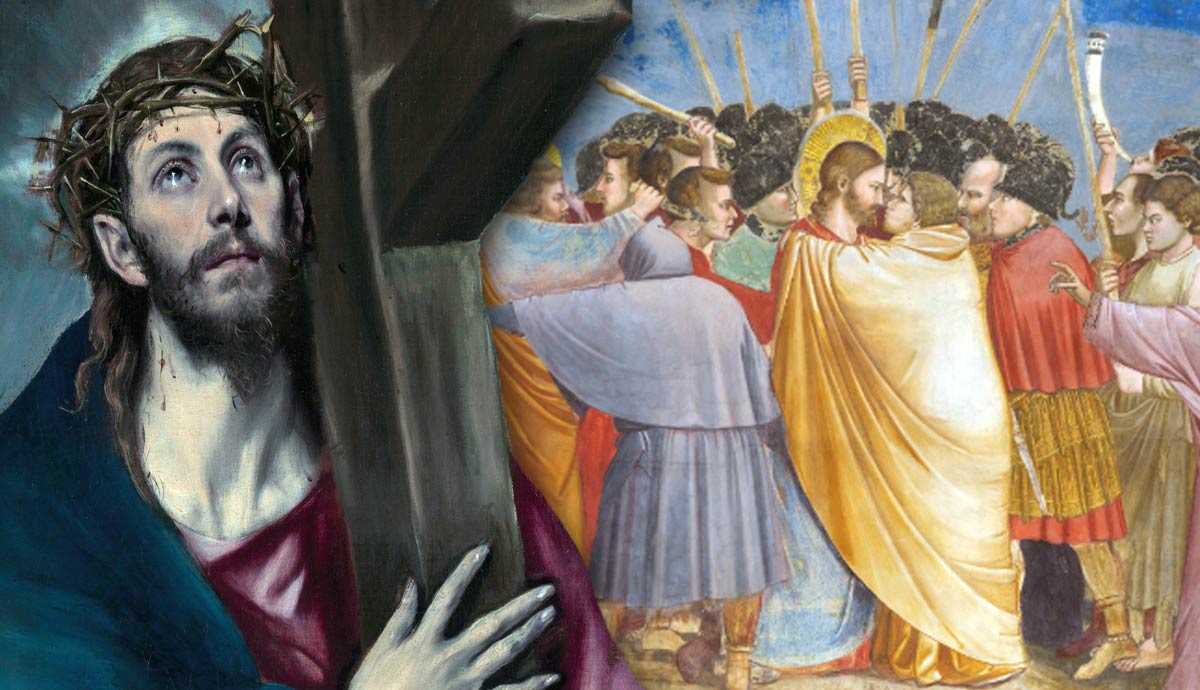
Some people have claimed that history repeats itself. If this statement is true, you might ask what characteristics are always present in instances of historical change or repetition. Perhaps the most obvious characteristic is the ability of great leaders to change their cultures and societies. One man with these characteristics (however reluctant) was the German reformer Martin Luther.
Luther’s ideas and convictions were ultimately responsible for changing the entire culture and outlook of greater Europe — and ultimately the trajectory of the world. If one is to understand Western civilization as we currently see it, one must understand the impact of Dr. Martin Luther.
From Peasant Family to the Monastery

Born as Martin Luder in 1483 in Saxony (later Latinizing his name), Luther would not have been much different from many of his contemporaries in Germany at the time. He grew up a bright student, although his parents were of relatively low status and would likely be seen as peasantry by today’s standards.
In keeping with his father’s desires, he enrolled to study law at the prestigious University of Erfurt where he became renowned for his philosophical competence and excellence in matters of debate. It was not until he had an unusual and terrifying brush with death—almost being struck by lightning and calling out to St. Anne to deliver him from danger—that Luther began having an existential crisis about his own mortality and his stance before God.
Contemplation on this event led him to the monastery, which for many was considered the easiest path to heaven. As scholar J.I. Packer notes: “Monasticism was the way par excellence to heaven. Thus, to save his soul, Martin Luther, the promising young law student, became a monk” (Packer & Johnston, 1957, pg. 20).
He Eventually Discovered Theological Gold

As part of Luther’s bargain with St. Anne, Luther forsook his law studies and entered an Augustinian monastery where he was ordained as a priest. He eventually went on to become a professor of theology at the newly established university at Wittenberg.
Although there is much that can be said about Luther’s experience in the monastery, the spark that ignited the spiritual firestorm came on October 31, 1517. On this day, after seeing what he considered to be gross abuses committed by the church, (particularly by John Tetzel’s selling of indulgences to partially pay for the construction of St. Peter’s Basilica), Luther is said to have nailed his “95 theses” to the door of the castle church in Wittenberg.
Contrary to the way it is often understood, Luther did not foresee the theses as being anything that would raise eyebrows, much less change the world. Church historian David L. Edwards explains: “It raised questions; it did not commit even Luther to the permanent holding of any particular opinion. And its questions were clearly not outside the territory which theologians could legitimately debate under the late medieval system” (Edwards, 1997, pg. 299).
The Diet of Worms

The printing press was invented by Johannes Gutenberg shortly before Luther’s day. As a result, Luther’s theses were published and spread like wildfire through Saxony.
As events cascaded and word made it to Rome that a monk was causing theological disturbances, Luther was eventually summoned to the Diet of Worms wherein he was asked to recant his writings. After being given a day to consider, Luther famously refused to recant his writings. Thus, Luther was excommunicated shortly thereafter by means of the Papal Bull Exsurge Domine.
With there now being a bounty out on Luther’s head for the charge of heresy, things seemed grim. However, Luther had the favor of the Elector of Saxony Frederick the Wise, who protected him by kidnapping him and hiding him in Wartburg Castle.
Here, under the alias Junker Jörg, he completed a translation of the Bible from Greek to German. His stay at the castle ultimately protected his teachings and Luther would influence the reformation of the church, culminating in the drafting of the Augsburg Confession — which was presented as the confession of faith for those who protested against Catholicism.
The Augsburg Confession and the Start of the Reformation

In 1530, at the request of the Holy Roman Emperor Charles V, a council was convened for the purpose of gathering the German princes together for them to unpack their religious convictions and make their theological cases.
This gathering became known as the Diet of Augsburg, during which 28 articles were penned chiefly by Luther’s friend and co-reformer, Philipp Melanchthon, and presented to the Imperial Diet. Luther himself, however, was under an imperial ban and was not able to attend the council, though he remained close by and was frequently informed of the developments.
The articles themselves are broken down by theological topic and contain 21 positive affirmations of faith (theses) and seven negations (antitheses). These topics included everything from the nature of the Godhead, the divinity of Jesus Christ, the nature of baptism and the Lord’s Supper, and many other hotly contested points of Christian faith between the Lutherans and the imperial Catholics.
The confessions also sought to dispute and correct many points of Catholic doctrine that they believed had fallen into error, such as the nature of the Mass or the ability of priests to marry. The confession of faith was signed by numerous secular authorities — including the Elector John of Saxony, and his heir, John Frederick.

Upon receiving the Augsburg Confession, the papal legate Cardinal Campeggio ordered an examination by Catholic theologians and he prepared a confutation which was presented back to the reformers to no avail. Melanchthon had responded to this confutation with his own apology to the Augsburg confession, and the two parties were at an impasse with the Romanists declaring the Lutherans refuted, and the Lutherans standing firm that they were not.
Luther had always been reluctant to resort to force matters in the defense of his understanding of the faith, but by this time he now backed the creation of a defensive league in order to maintain Reformation doctrine in the territories where it had been adopted.
This league, called the Schmalkaldic League, consisted of a defensive union of several cities — including Saxony, Hesse, Magdeburg, and many others. These actions would lead to a torrent of events which would culminate in further wars, councils, and schisms in the Holy Roman Empire for the next two centuries.
Life and Legacy

While Luther began his career as a professor while still an Augustinian monk, he was eventually released from his monastic vows by his abbot and mentor Johann Von Staupitz. He remained a professor in Wittenburg and famously married Catarina Von Bora — a former nun who, with many of her fellow nuns, had escaped a convent and fled.
This act of marriage between a former monk and a former nun scandalized many. Luther, however, seemed to relish this scorn as he believed that the forbidding of marriage was itself the scandal. The Luthers had six children in total, three boys and three girls, though two of the girls passed away in childhood.
Luther’s accomplishments were many, but the significance of these accomplishments will vary depending on who is asked. As a scholar, Luther completed the translation of the Bible into German as David Edwards notes: “More than any other book it created the modern German language along with German Protestantism” (Edwards, 1997, pg. 295).
He also made many important contributions to theology, most importantly to the understanding of the doctrine of justification. His teachings created greater access to worship in the vernacular, and they were very influential in the philosophy of education and the rise of world literacy. To this day his courage and teachings serve as the basis for millions of Christians, and many still worship in denominations that bear his name.

For all of Luther’s gifts, he was not without many faults. For example, he famously wrote some extremely harsh polemics. Some of these were directed toward other theologians. For example, his famous exchange with the humanist scholar Erasmus of Rotterdam led to one of his more well-known works The Bondage of the Will.
Later on in his life, other his works denounced the Jews and called for the destruction of their synagogues and writings wherever they were to be found. At times, his pastoral discretion was also heavily scrutinized. Under pressure, he was known to have encouraged Phillip the prince of Hesse to commit bigamy, making the excuse that since it wasn’t explicitly forbidden in scripture that it must be tolerable (Edwards, 1997). Luther was also particularly harsh in temperament and known to be difficult at times to work with.
Conclusion

While often overlooked in discussions of Western civilization, it is hard to overstate what a monumental historical figure Luther is. Because of the sheer size and scope of his impact, Luther is sometimes referred to by historians as the “last medieval man.”
An examination of his life and the events that were unleashed in its wake show why many view him as the one singular bridge from the medieval era to the modern. Things that seem insignificant — like the landscape of European city-states, were massively influenced by the religious wars of the 17th century that immediately followed the Reformation.
Indeed, the world would likely look very different today if it were not for Luther’s life and work — regardless of how one appraises the merits of his theological and political contributions. While this has been a brief introduction, the students of history must give Luther a fair look if they want to understand the world as we see it today.
Bibliography
Edwards, D. L. (1997). Christianity: The first two-thousand years. Maryknoll, New York: Orbis Books.
Packer, J. I., & Johnston, O. R. (1957). The bondage of the will. Grand Rapids, MI: Baker Book House Company.










